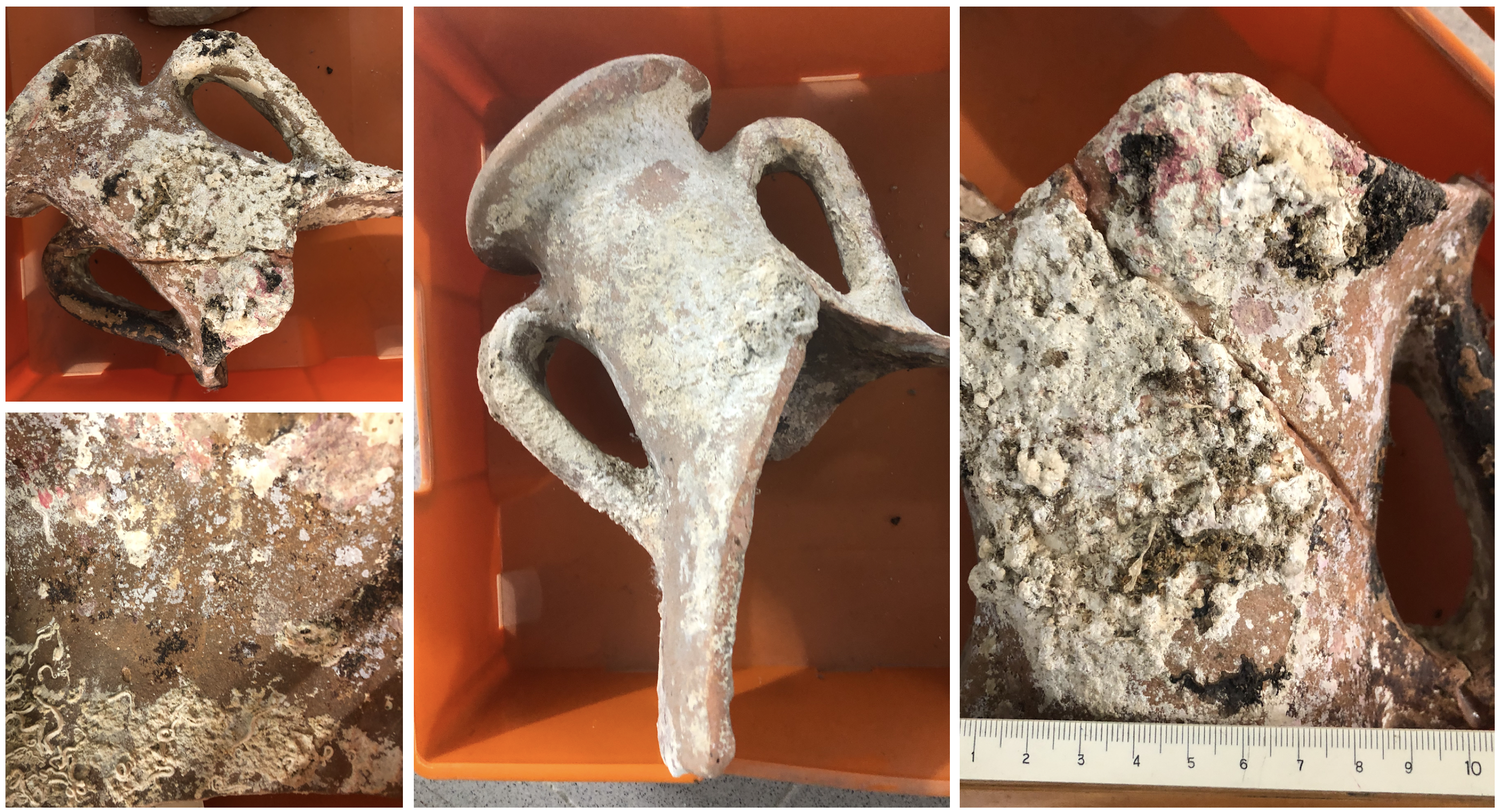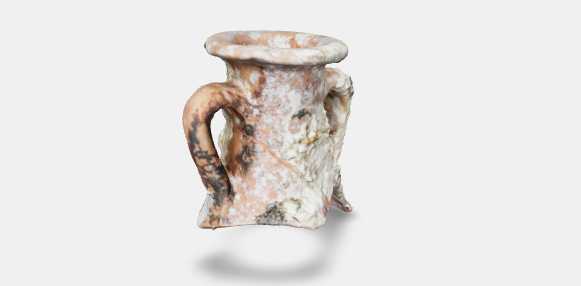Fragmentary amphora, type Keay XXV. The neck is preserved, complete with handles and everted rim.
This amphora type may be collocated between the type called “Africana Grande” and the later cylindrical type, always large. This type was popular between the beginning of the IV and the second half of the V century A.D.
It was almost certainly of Tunisian manufacture and it was used for oil and, to a lesser extent, for fish sauce transport (KEAY 1984, pp. 184, 193, 212).
On the external and internal surfaces of this fragment of an amphora, there are traces of mixed colonisation, mainly from sedentary Polychaetes, thalli of encrusting red algae and Bryozoans. Algal thalli and other carbonatic structures are in some cases perforated by endolithic boring sponges (Clionidae) whose presence is recognisable by tiny circular holes. There are still some visible traces of epilithic, not encrusting algal thalli of a green-brownish colour.

Keay S. J. 1984, Late Roman amphorae in the Western Mediterranean. A typology and economic study: the Catalan evidence, Oxford, British Archaeological Reports International Series.
Marino D.A., Corrado M. 1996, Scoperte lungo il litorale di Crotone, in L’Archeologo Subacqueo 4, p. 7.
Medaglia S. 2010, Carta archeologica della provincia di Crotone: paesaggi storici e insediamenti nella Calabria centro-orientale dalla Preistoria all’Altomedioevo, RICERCHE. Collana del Dipartimento di Archeologia e Storia delle Arti, IV, Università della Calabria, Cosenza.



